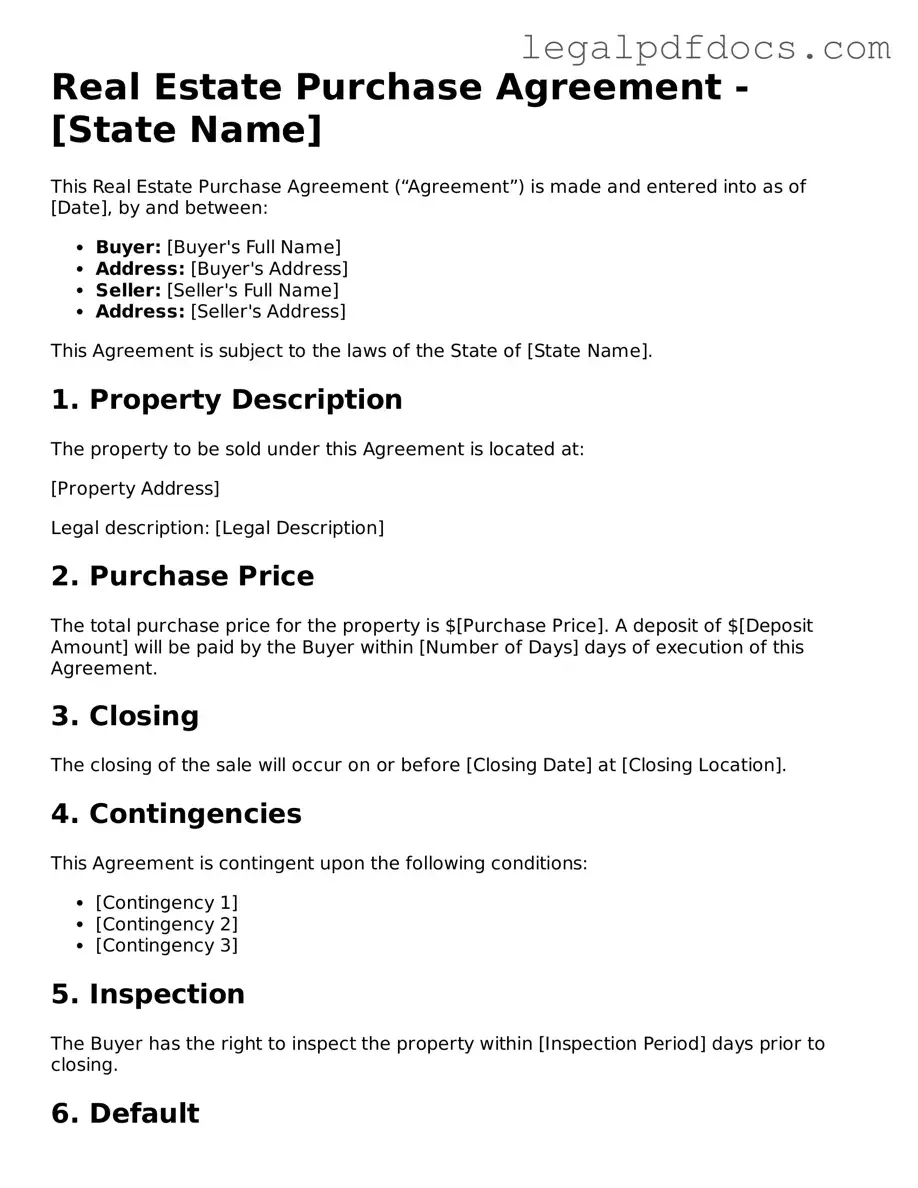When engaging in the process of buying or selling property, the Real Estate Purchase Agreement (REPA) serves as a critical document that outlines the terms and conditions of the transaction. This comprehensive agreement typically includes essential details such as the purchase price, financing arrangements, and the closing date. It also delineates the responsibilities of both the buyer and the seller, ensuring that each party understands their obligations throughout the transaction. Key elements often covered in the REPA include contingencies, which protect buyers by allowing them to withdraw from the deal under certain conditions, such as unsatisfactory inspections or the inability to secure financing. Additionally, the agreement addresses the inclusion of personal property, such as appliances or fixtures, that may be part of the sale. By clearly articulating these aspects, the Real Estate Purchase Agreement not only facilitates a smoother transaction but also helps to mitigate potential disputes, providing a framework within which both parties can operate with confidence. Understanding the nuances of this document is essential for anyone involved in real estate, as it lays the groundwork for a successful transfer of ownership.
